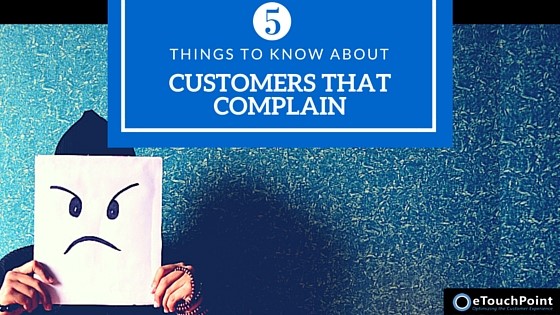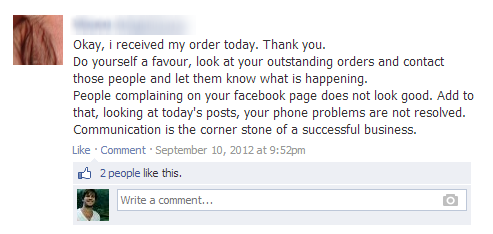It seems counterintuitive, but negative feedback from customers is a good thing for your business. A customer who cares enough about the relationship and products/or services to share difficult opinions deserves attention and respect.
As inspirational business visionary Zig Ziglar once said:
Statistics suggest that when customers complain, business owners and managers ought to get excited about it. The complaining customer represents a huge opportunity for more business.
But how can CX pros on the front lines with disgruntled customers get excited about receiving harsh comments?
Understanding 5 things customers think about when they complain—beyond the specifics of the issue at hand—provides important big-picture perspective. This mindset can help CX pros stay attentive to the customer and identify opportunities for service improvements that can affect large segments of future customers.
1. They Can Take Their Business Elsewhere with Ease
In the past, consumers had limited access to products and services. But today’s digital consumers can buy from a business down the street or on the other side of the world with ease.
Customers are well aware of their ability to choose to do business with a company—or take their business elsewhere if an interaction goes sour. Research from Accenture validates that considering more options before buying and shift in loyalties is the new normal:
- 56% of customers say the number of options they consider has gone up significantly over the past 10 years.
- 46% agree that they are more likely to switch brands than they were 10 years ago.
While customers defect for many reasons—including price and convenience—bad experiences often drive them away. In fact, analysis from 24/7 revealed that 47% of customers switch to a competitor within one day after experiencing poor customer service.
When interactions go wrong—and they will even in the most customer-obsessed environments—organizations need to take quick actions to prevent defections. A strong closed-loop alerting process—featuring real-time alerts about poor survey responses, along with tools for follow-up and closing issues—is a must for every customer-centric organization.
2. They Might Complain – in Private or in Public—If You Don’t Help Them
Customers are likely to share negative sentiment about brands that fail them—either in person or online. A 2016 research study from Ipsos showed that 52% of customers are likely to tell friends, family, or colleagues about a bad experience.
With the rise of social media, customer complaints have even more power and reach. Customers can easily make their frustration with brands visible—and can spur others to share negative perceptions.
Image Source: Client Heartbeat
Quick action to resolve customer complaints can keep negative posts off social media and prevent damage to a brand’s reputation. A good goal is aiming to reach out to unhappy customers who leave poor survey feedback within 24 hours.
3. They Won’t Forget a Bad Experience
Customers do not forget when things go wrong.
In fact, academic research has proven that humans are biologically hardwired to remember bad experiences. One important study by social psychologist Roy F. Baumeister showed that .
The reason? Baumeister surmised that humans who are “more attuned to bad things were more likely to survive threats…Survival requires urgent attention to possible bad outcomes…”
It’s no surprise that consumer research has found that negative customer experiences will linger with a customer more than positive ones. A study of 3,000 consumers by SDL asked them to recall their biggest CX failures and successes in the past decade. Seventy-six percent (76%) of repondents recalled a service failure, but only 55% could remember a positive experience.
And customers make buying decisions based on those bad memories. Statistics from Zendesk and Dimensional Research revealed that some customers will avoid a brand for two years after a single bad experience:
What does this research show? Negative customer experiences are not isolated, forgettable incidents. Instead, they are potent influencers of customer behavior—with years of staying power.
4. They Are Giving You a Chance to Make Things Right
When customers voice dissatisfaction, they are often looking for a solution. They are giving the brand an opportunity to fix what went awry and retain them as customers.
Unfortunately, many companies do not do all they can to resolve customer issues.
According to a 2016 study, just 43% of customers who voiced concerned to brands indicated that the company addressed their concerns. That means more than half of customer issues go unresolved.
However, those that do take swift and definitive action earn trust and loyalty—with the affected customer and potentially thousands of others if the interaction occurs on social media.
Consider an example from JetBlue, an economy airline that has earned acclaim for its attentive social customer service. When a JetBlue passenger complained on Twitter about a broken TV on his flight, the airline’s service team jumped into action.
Image Credit: Buffer, 2015
Instead of ignoring his tweet or minimizing his concern, JetBlue promptly empathized with his complaint and offered to credit him for the non-working TV. He responded with renewed respect for a favorite airline brand.
Image Credit: Buffer, 2015
5. They Need to Express Their Feelings
While some customers want a remedy for their concern, others just need to talk about it.
When customers speak up, they typically have strong feelings—either very negative or very positive—about the experience or the person who delivered it. Those on the front lines with customers need to understand and address strong customer feelings.
Developing exceptional listening skills is a must. As Fast Company explains, customer-facing professionals can achieve effective listening by:
- Being fully present in the moment
- Putting themselves in the customer’s shoes
- Identifying the key points and repeating them to the customer
- Practicing active listening by concentrating on what the customer says instead of passively receiving information
- Striving for ongoing growth
By listening attentively and asking meaningful questions, frontline professionals can understand what the customer wants to achieve by offering feedback. They can collaborate with the customer to devise a solution—or provide attentive listening that makes the customer feel valued and heard.
Embracing the Positive Potential in Negative Feedback
No one likes to be on the receiving end of negativity. Yet complaint management is an important element of every CX professional’s job.
To handle complaints effectively, CX pros need skill to assess the situation at hand—and to take a step back and remember the bigger picture. They need to view customer complaints as opportunities for growth instead of problems to process.
Although recognizing the value of customer complaints can be challenging at first—frontline professionals and CX-savvy organizations can learn this vital skill. Over time, CX pros can embrace the positive potential in every piece of negative feedback—and use this insight to deliver higher-quality experiences to customers.
Author: Connie Harrington
Connie is a content strategist and serves as managing editor of the eTouchPoint blog. Possessing 15+ years of international experience across five continents, her focus areas include: customer experience management, customer contact management, communications planning, content marketing, email marketing, and employee engagement. Previously, she held marketing and communications leadership positions at CGI, Mindwrap, and TEOCO. She earned a B.A., cum laude, from the College of William and Mary in Virginia.






